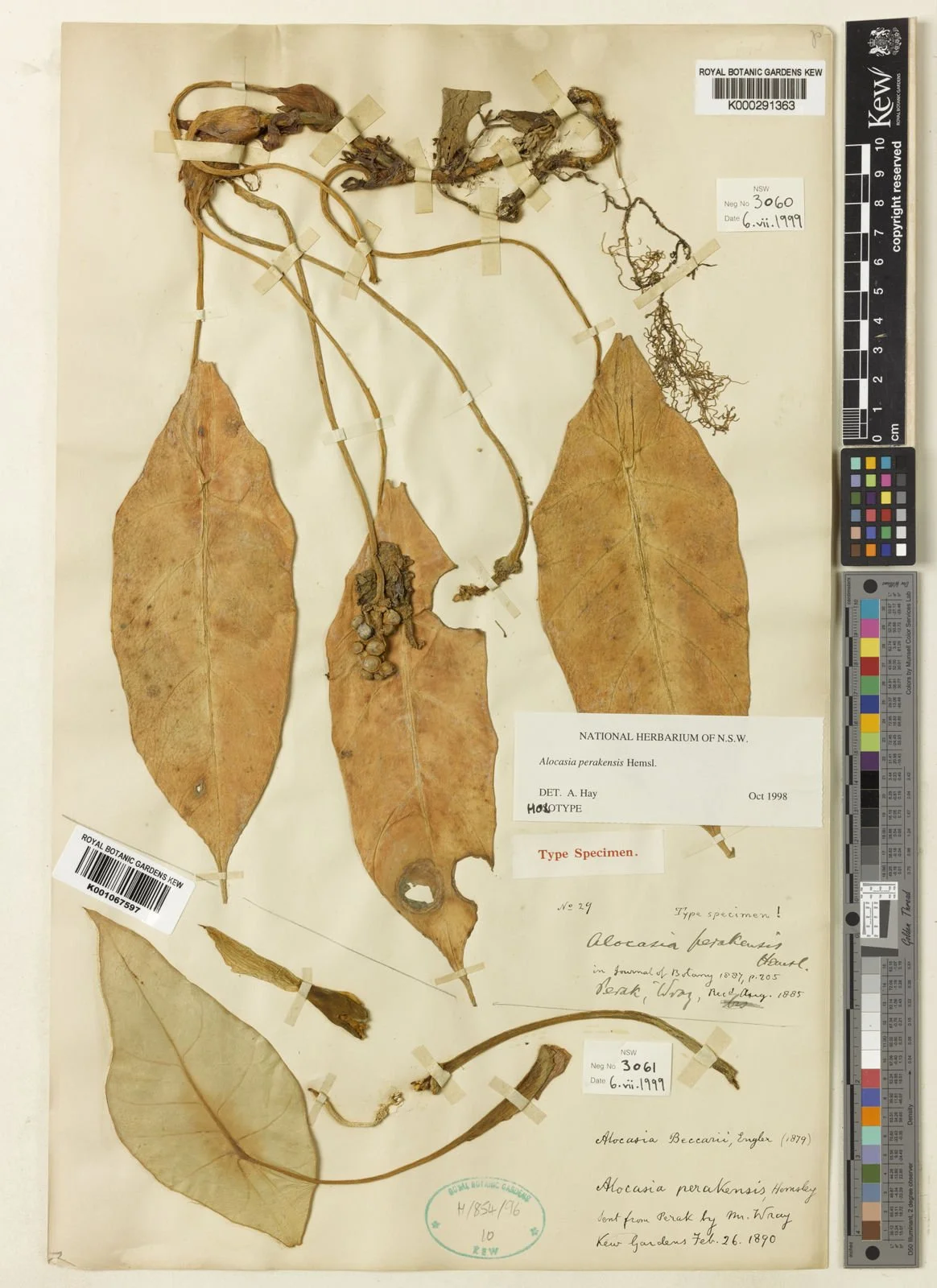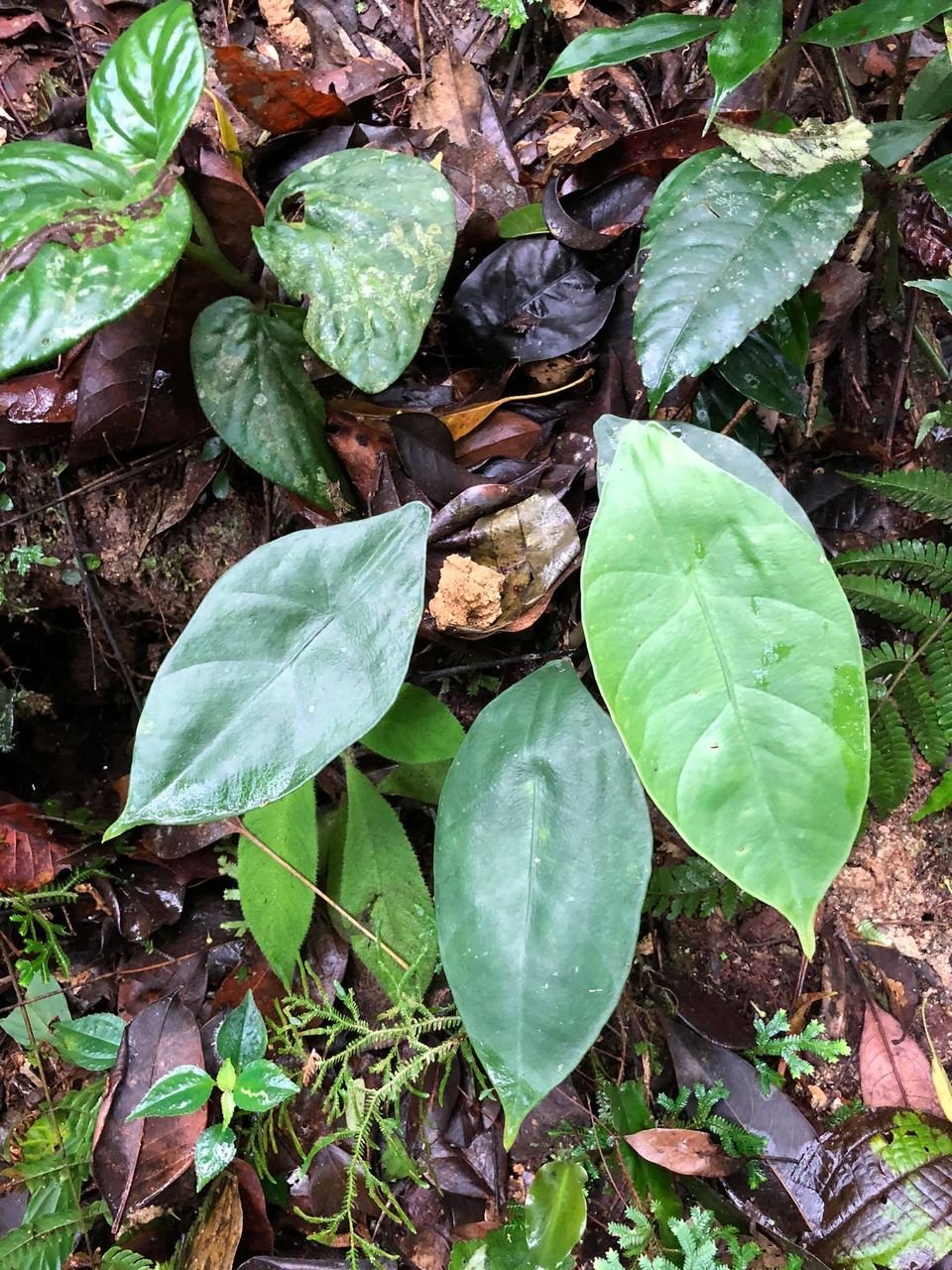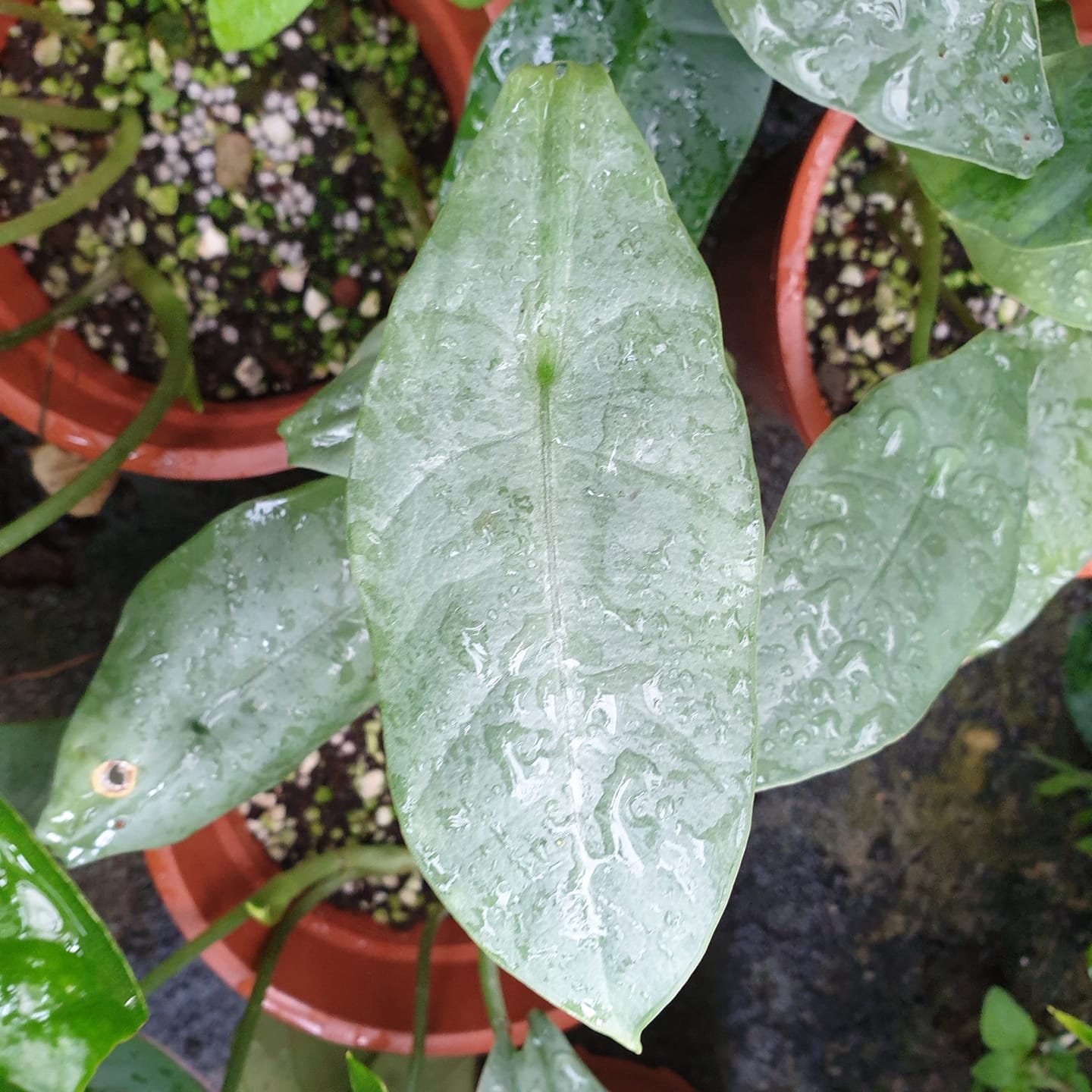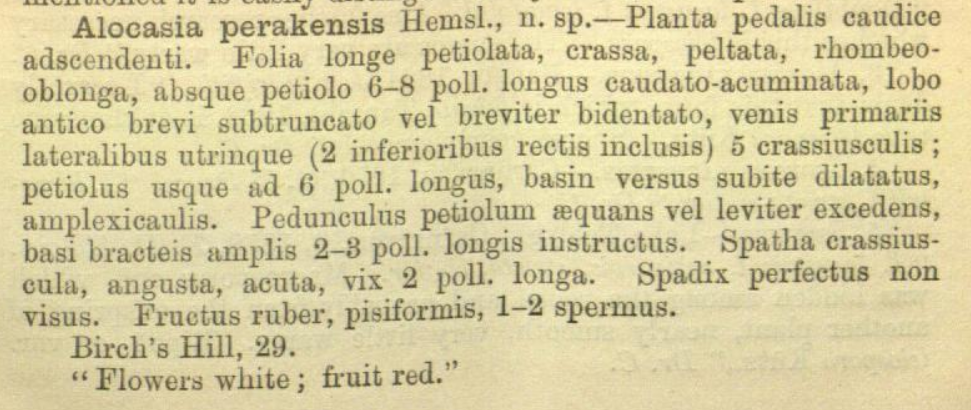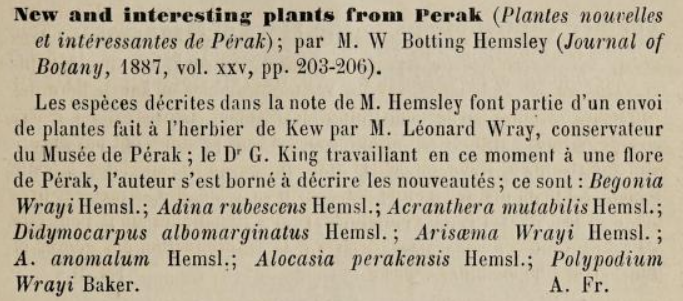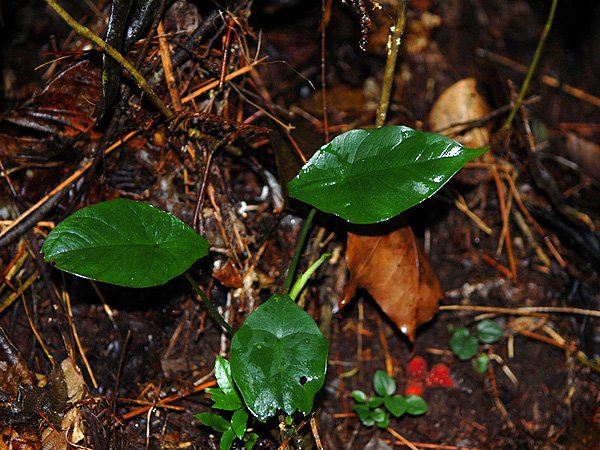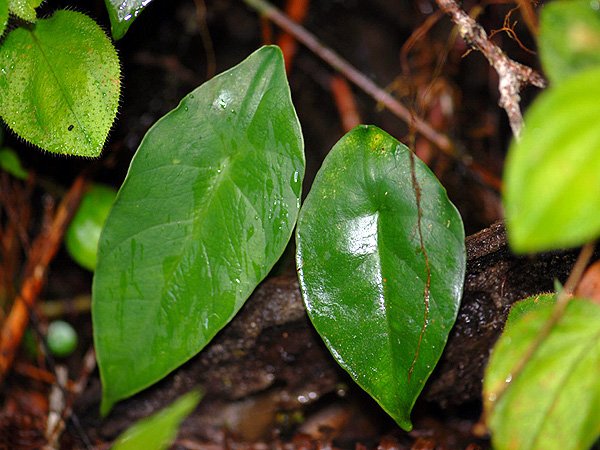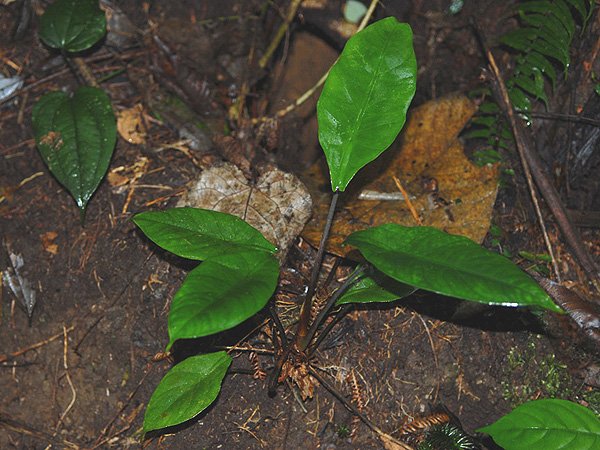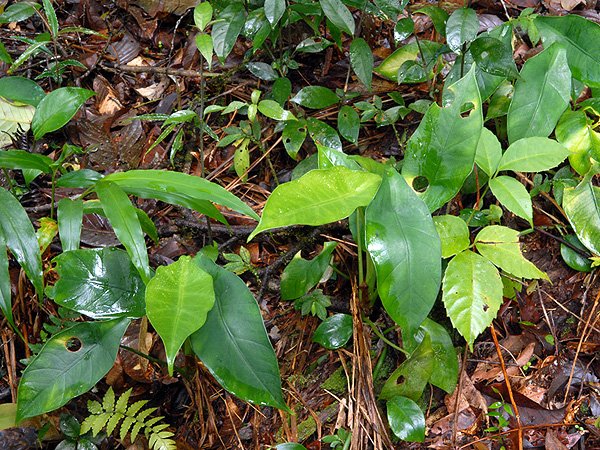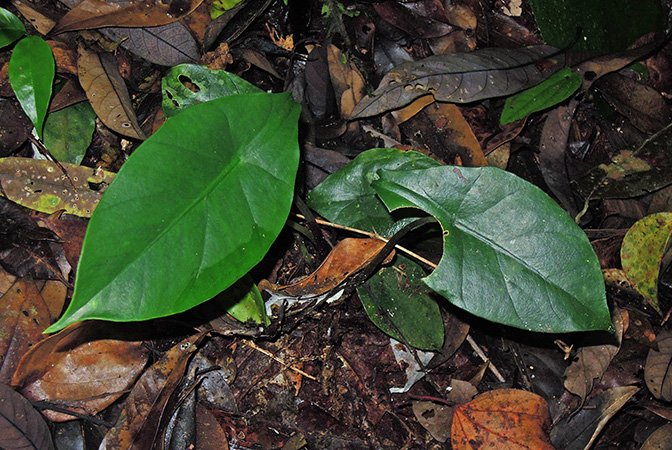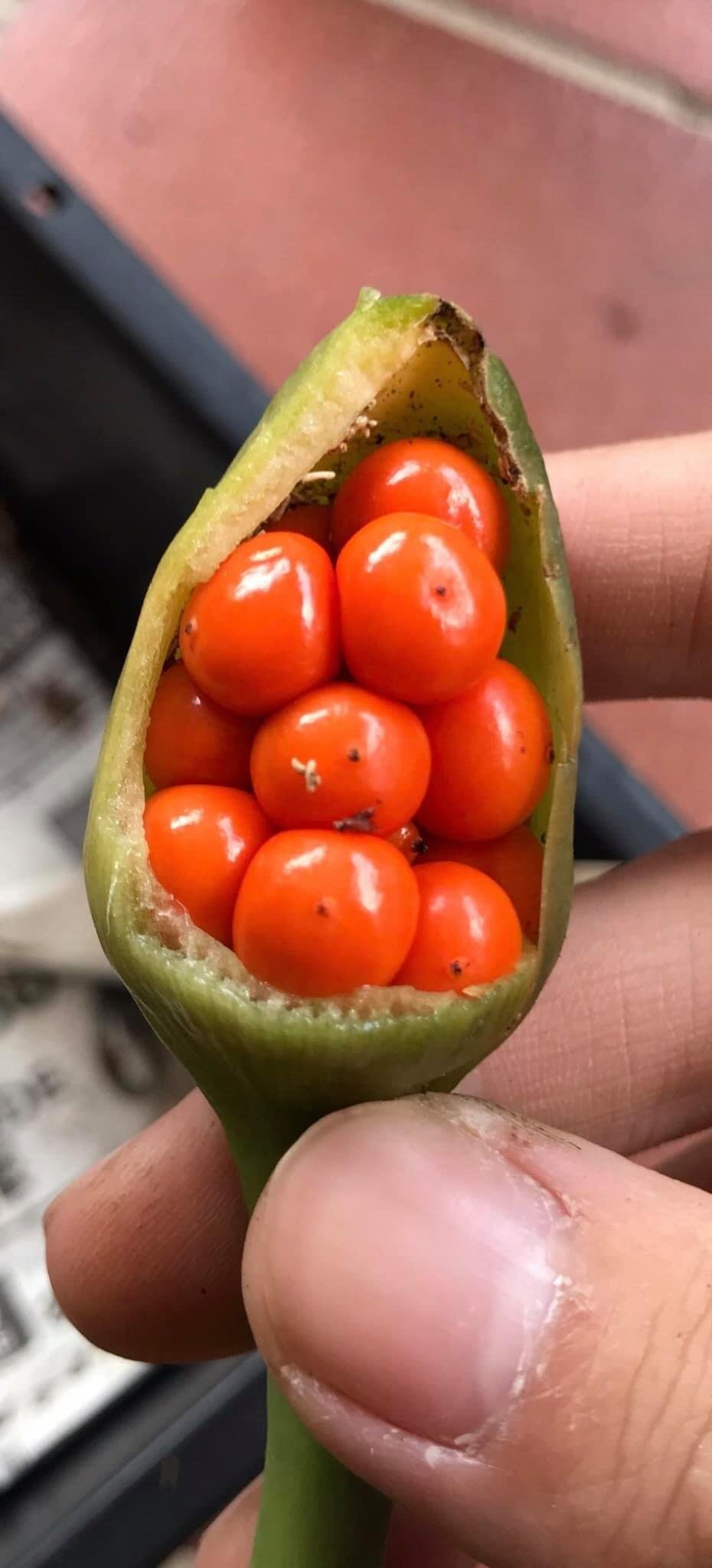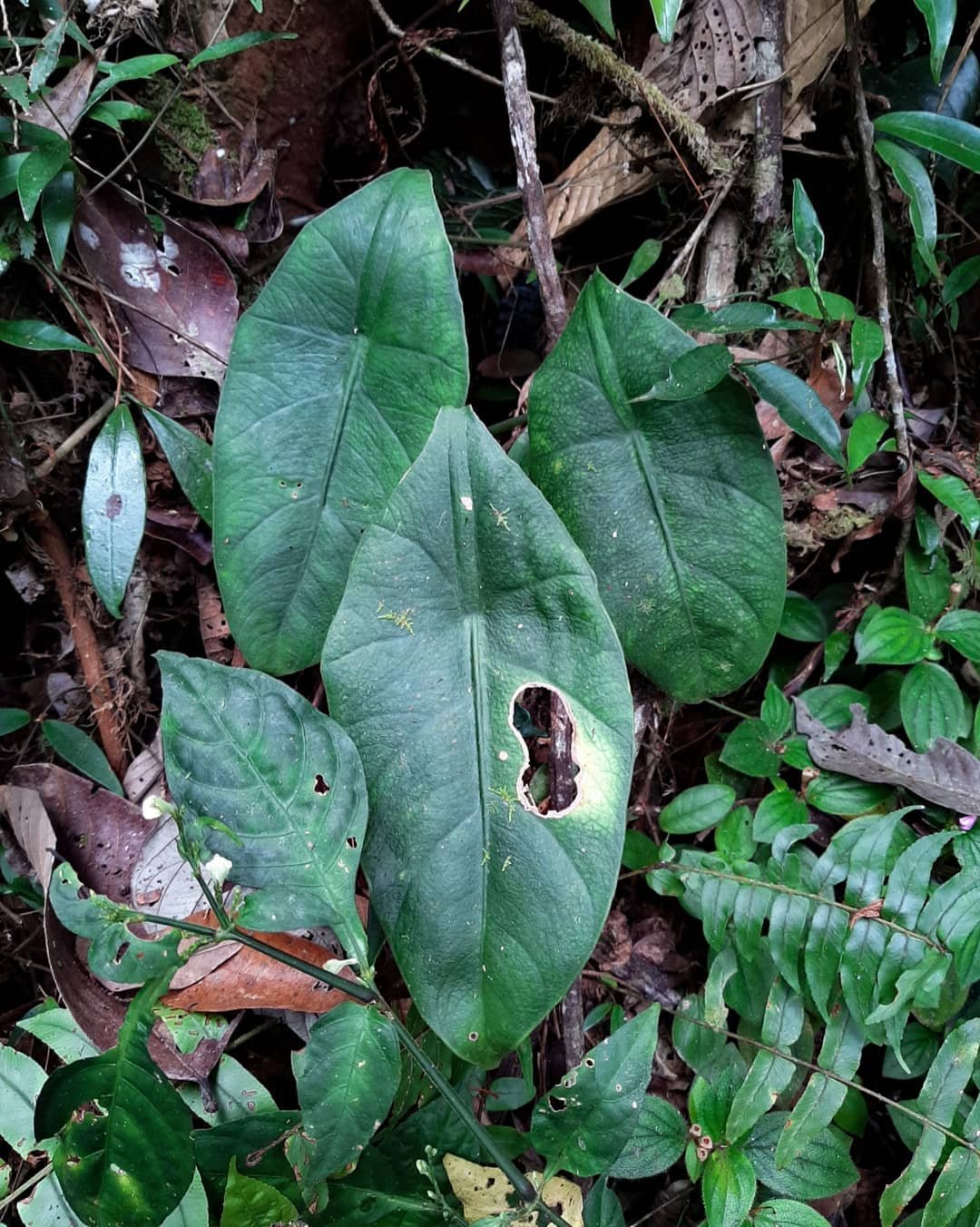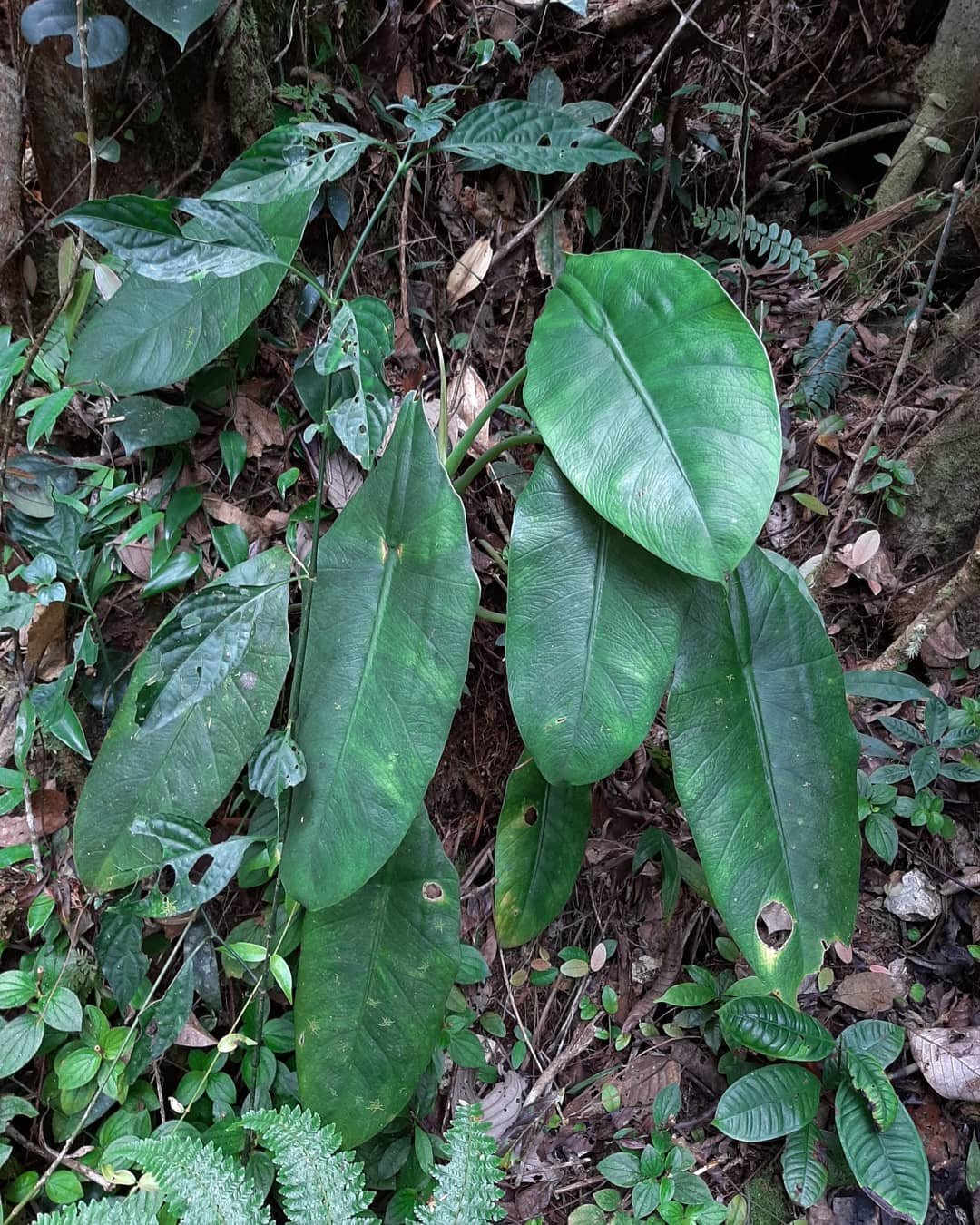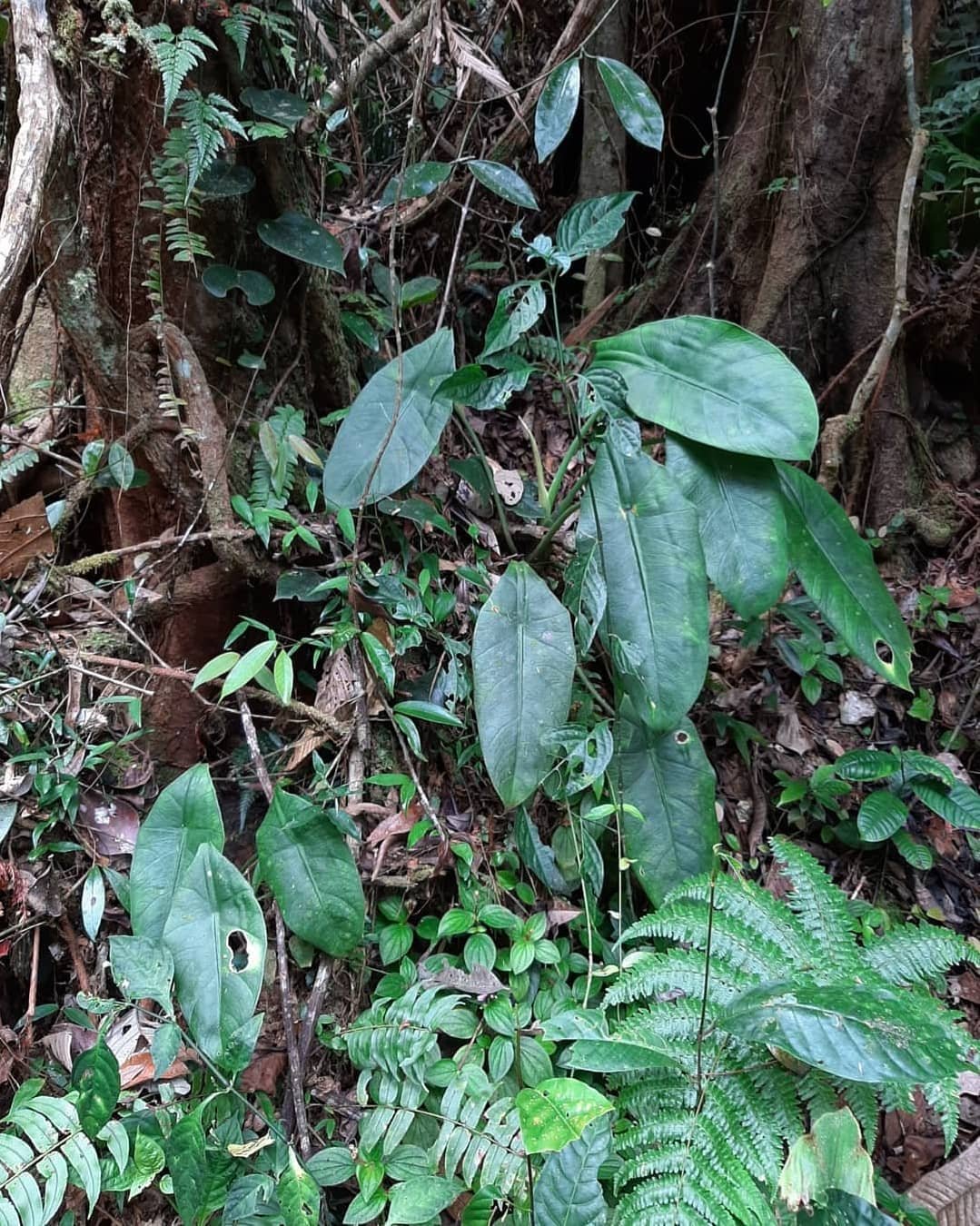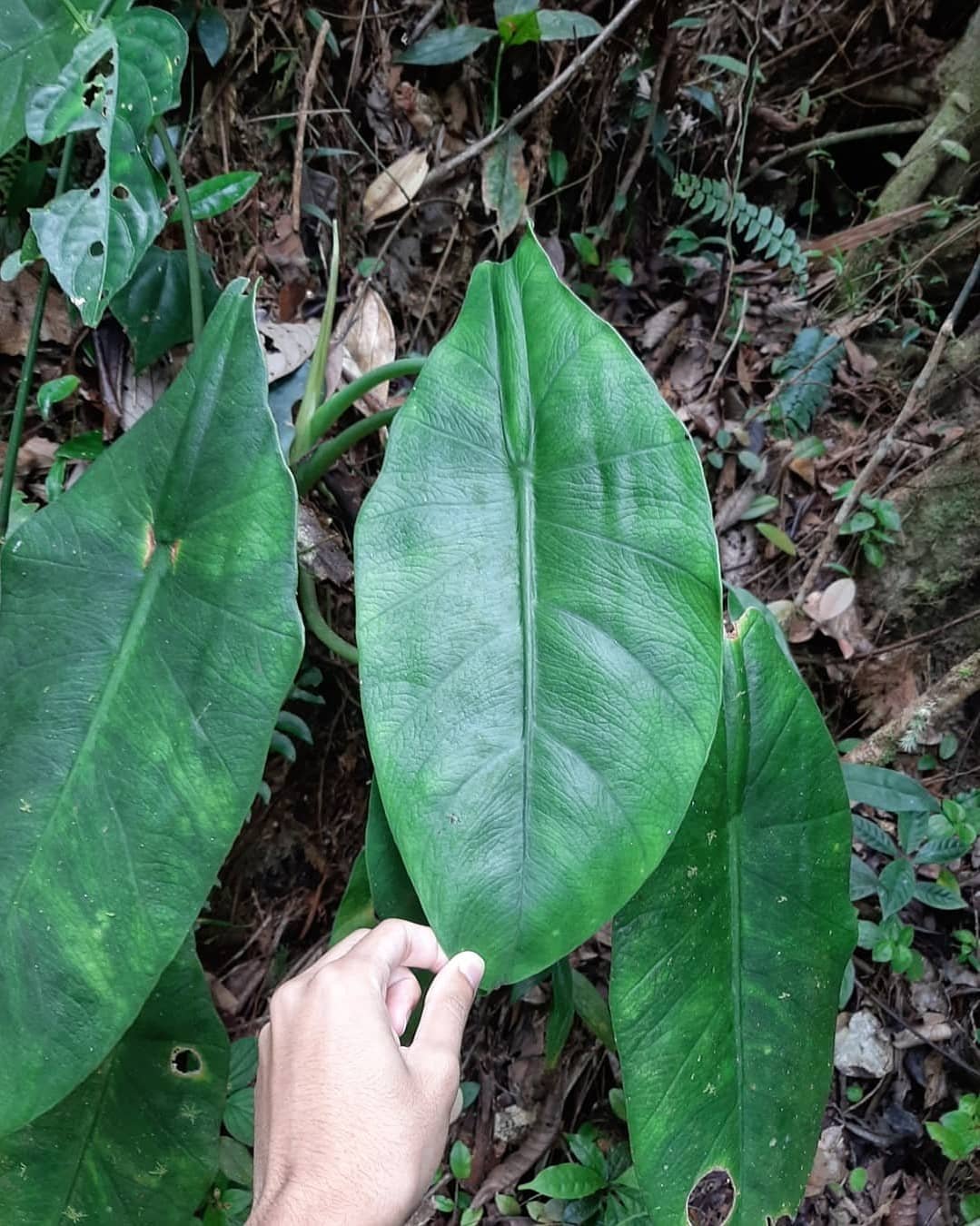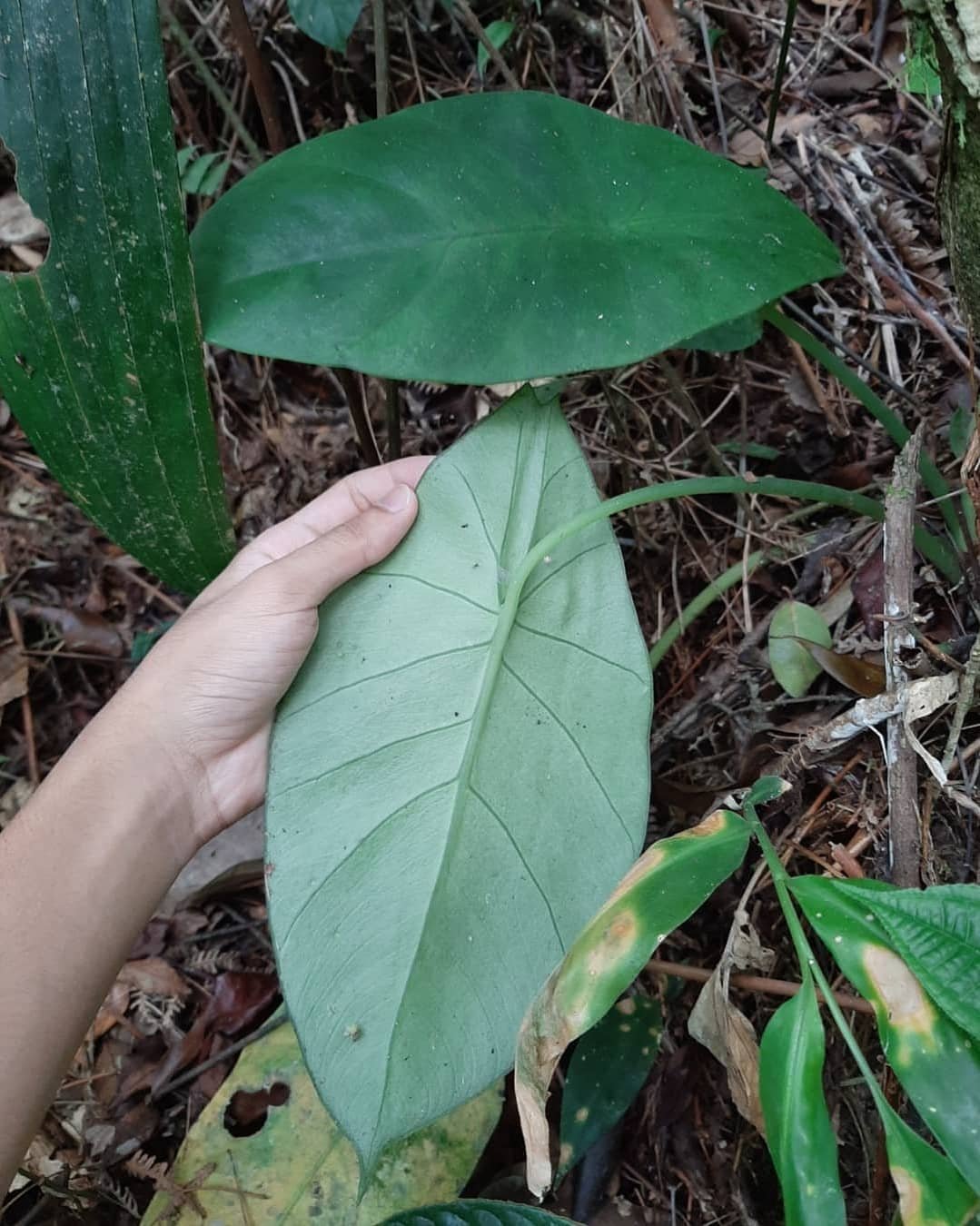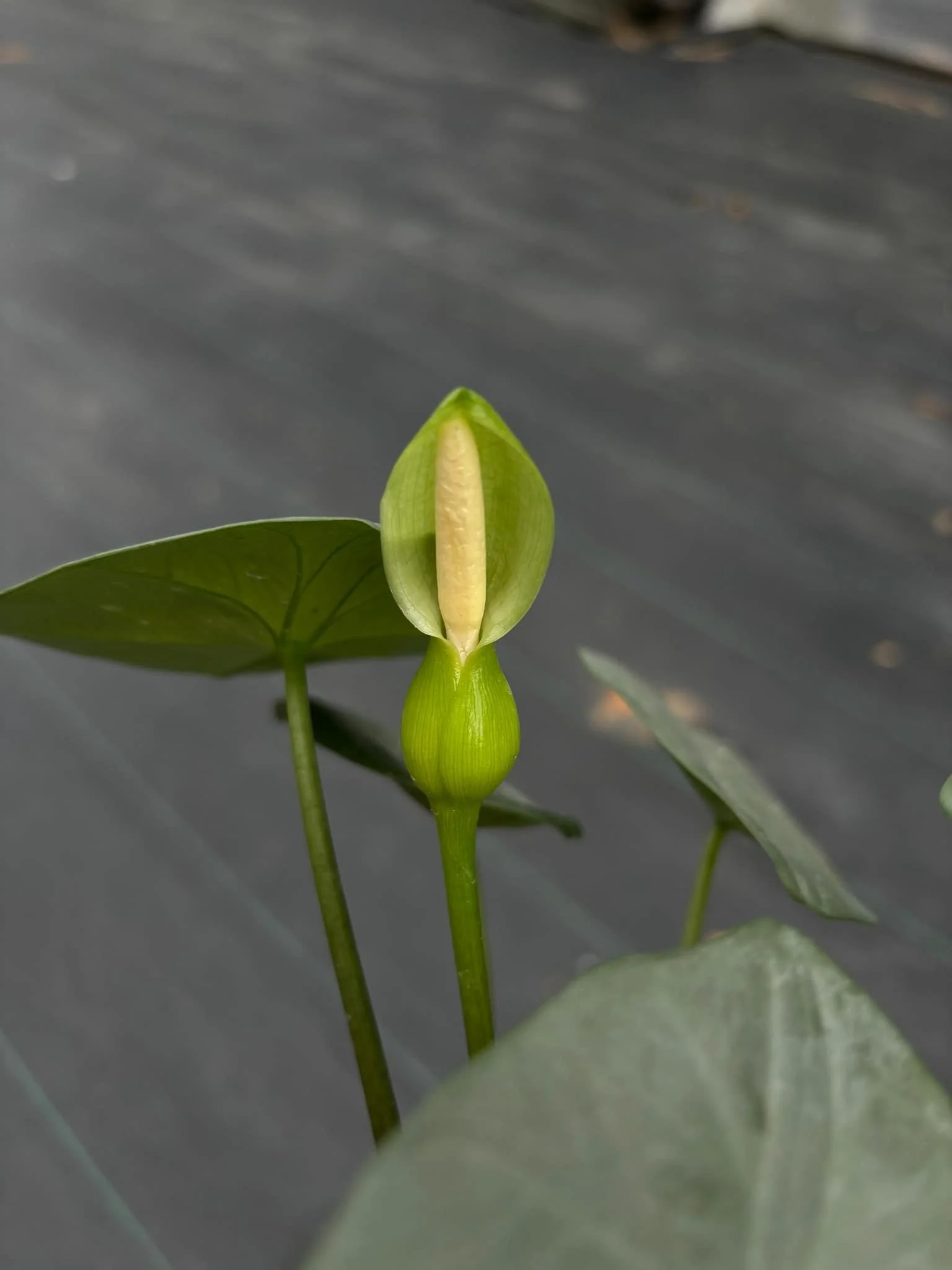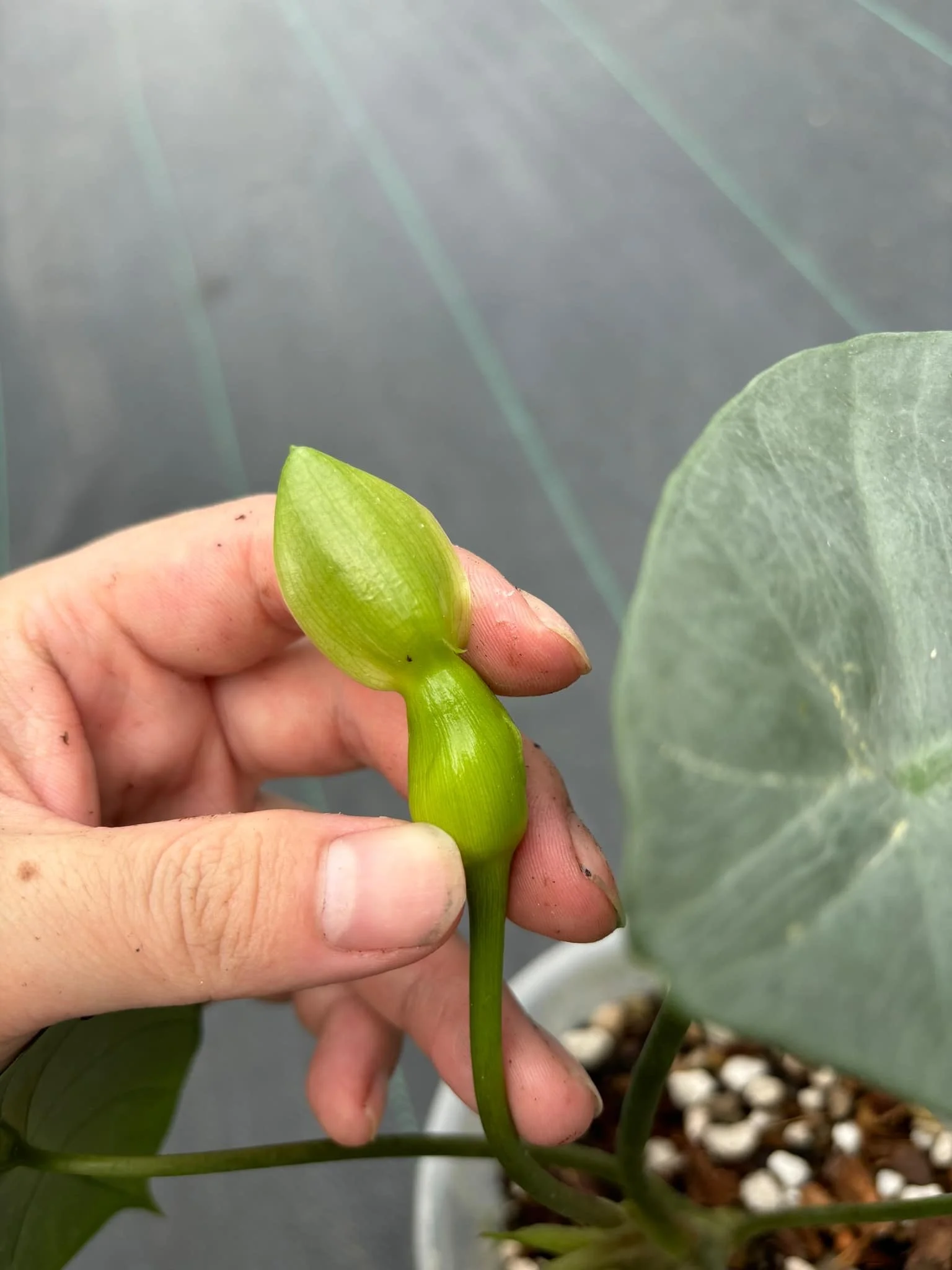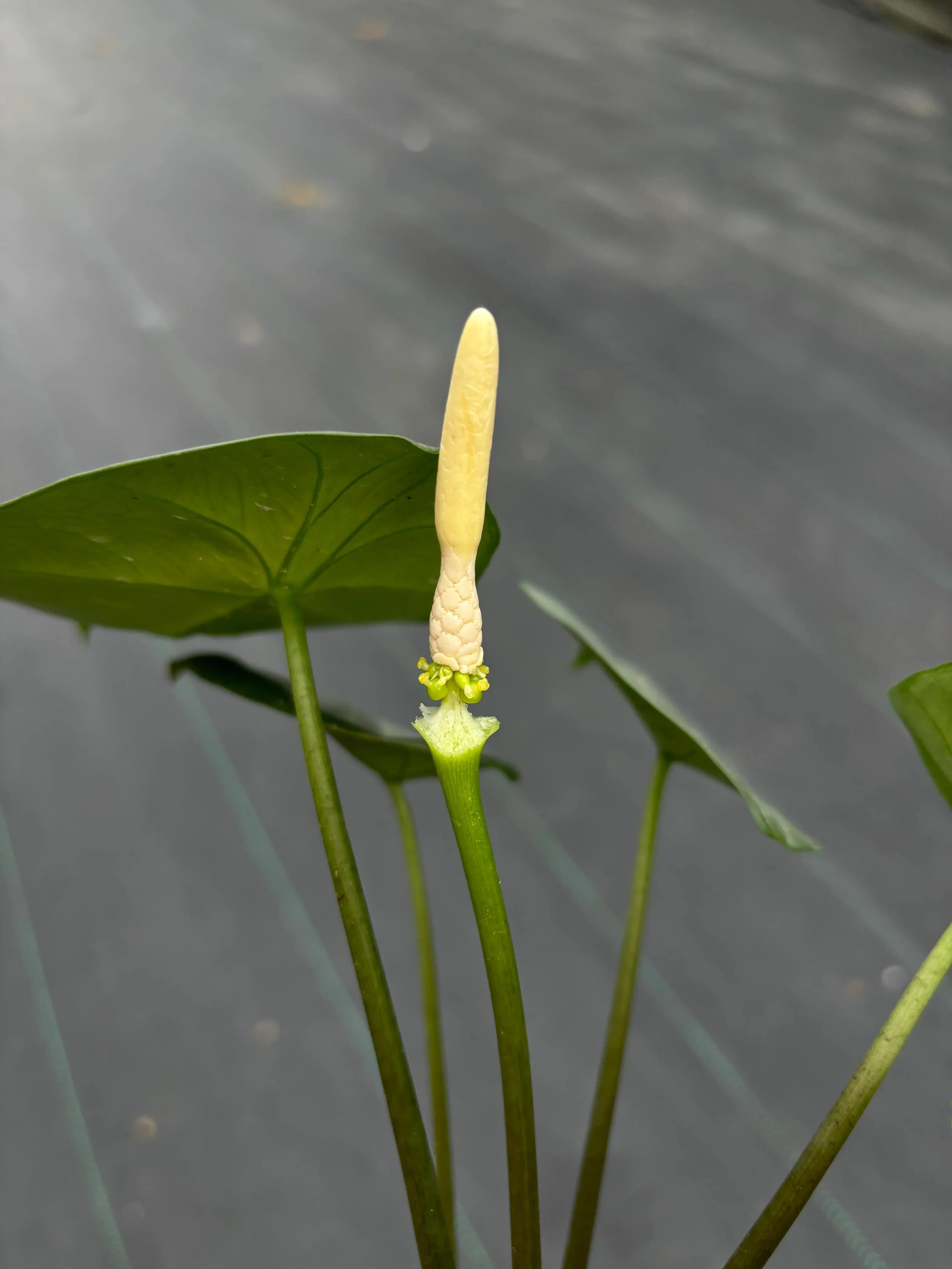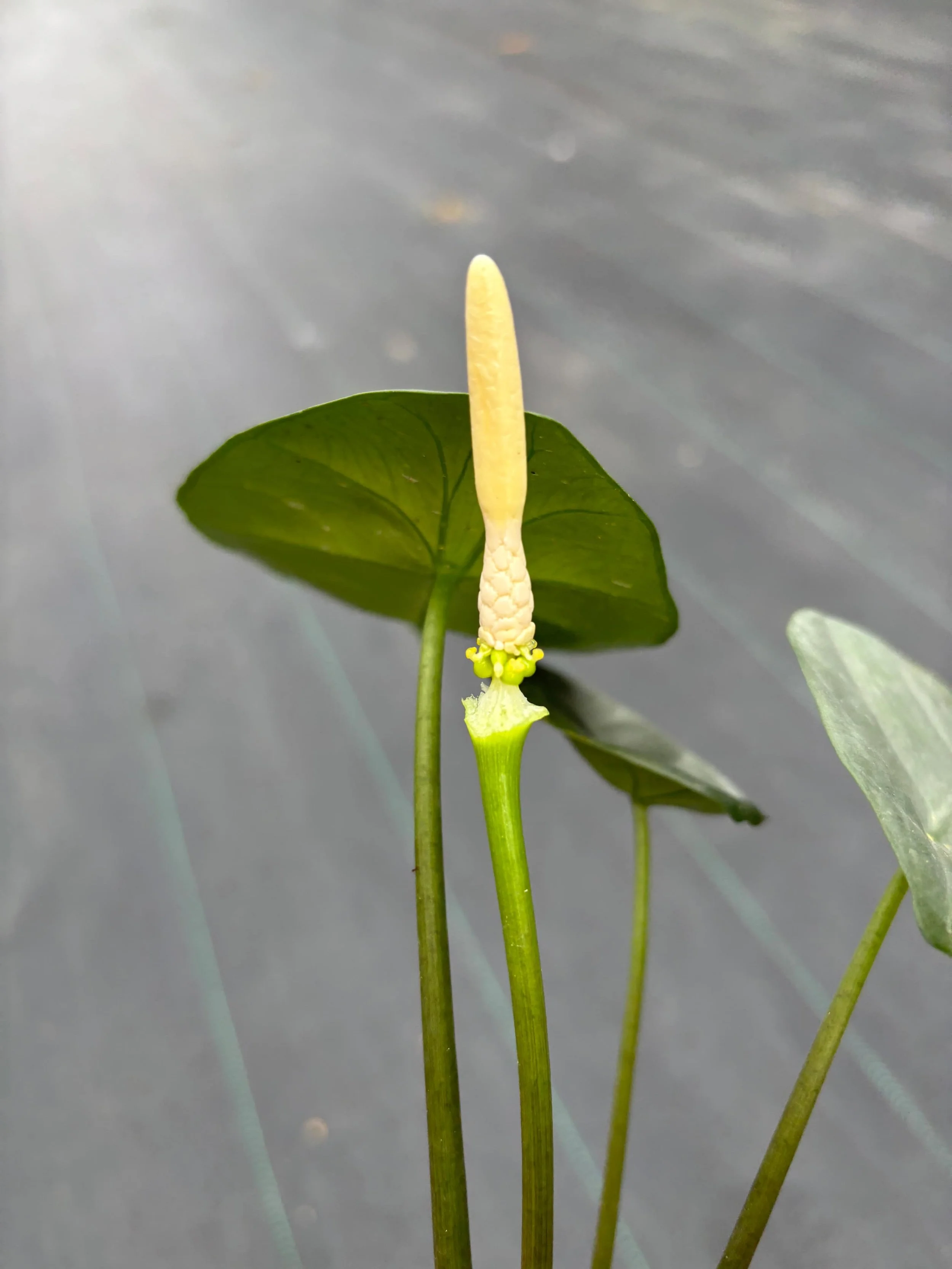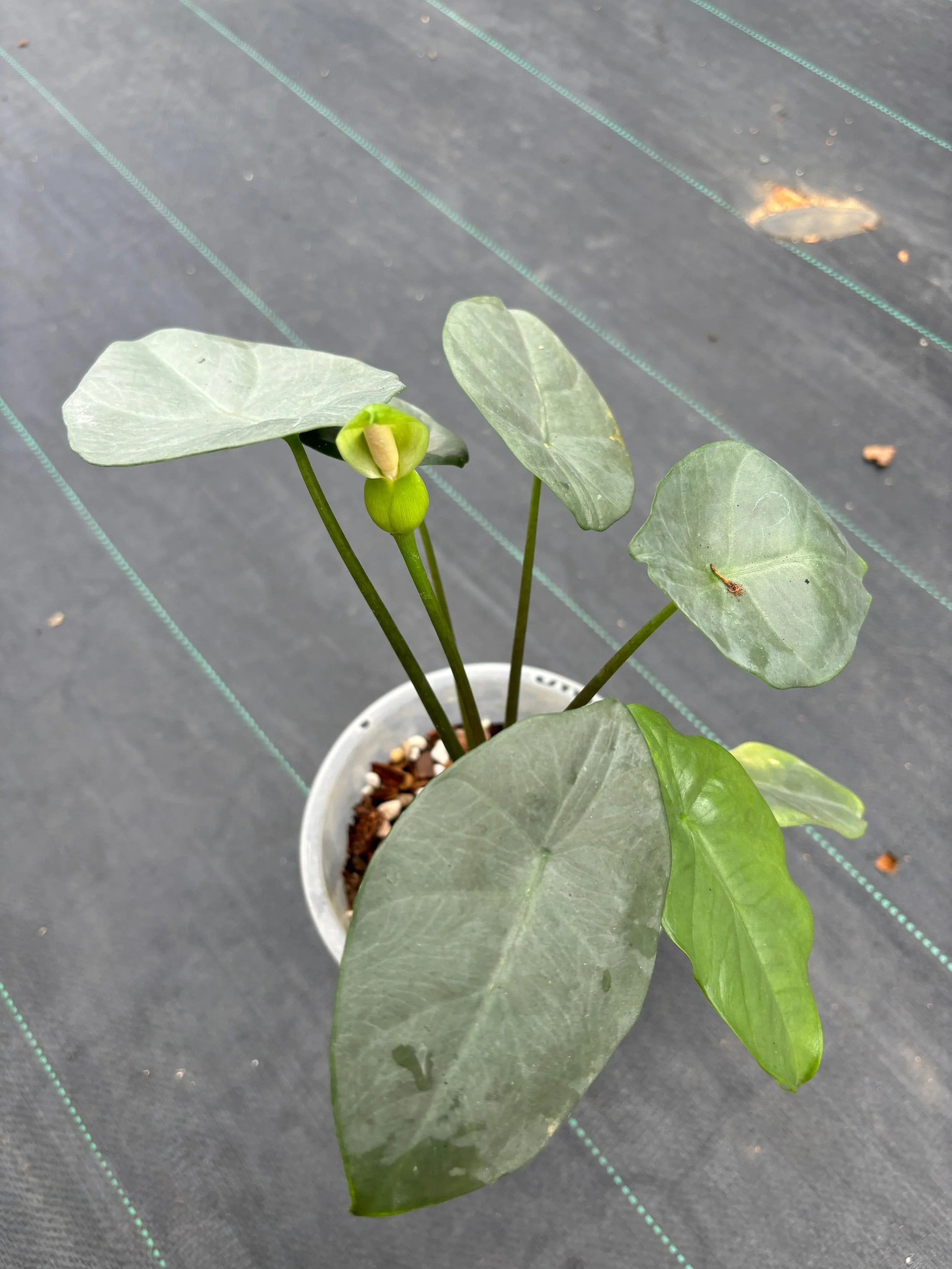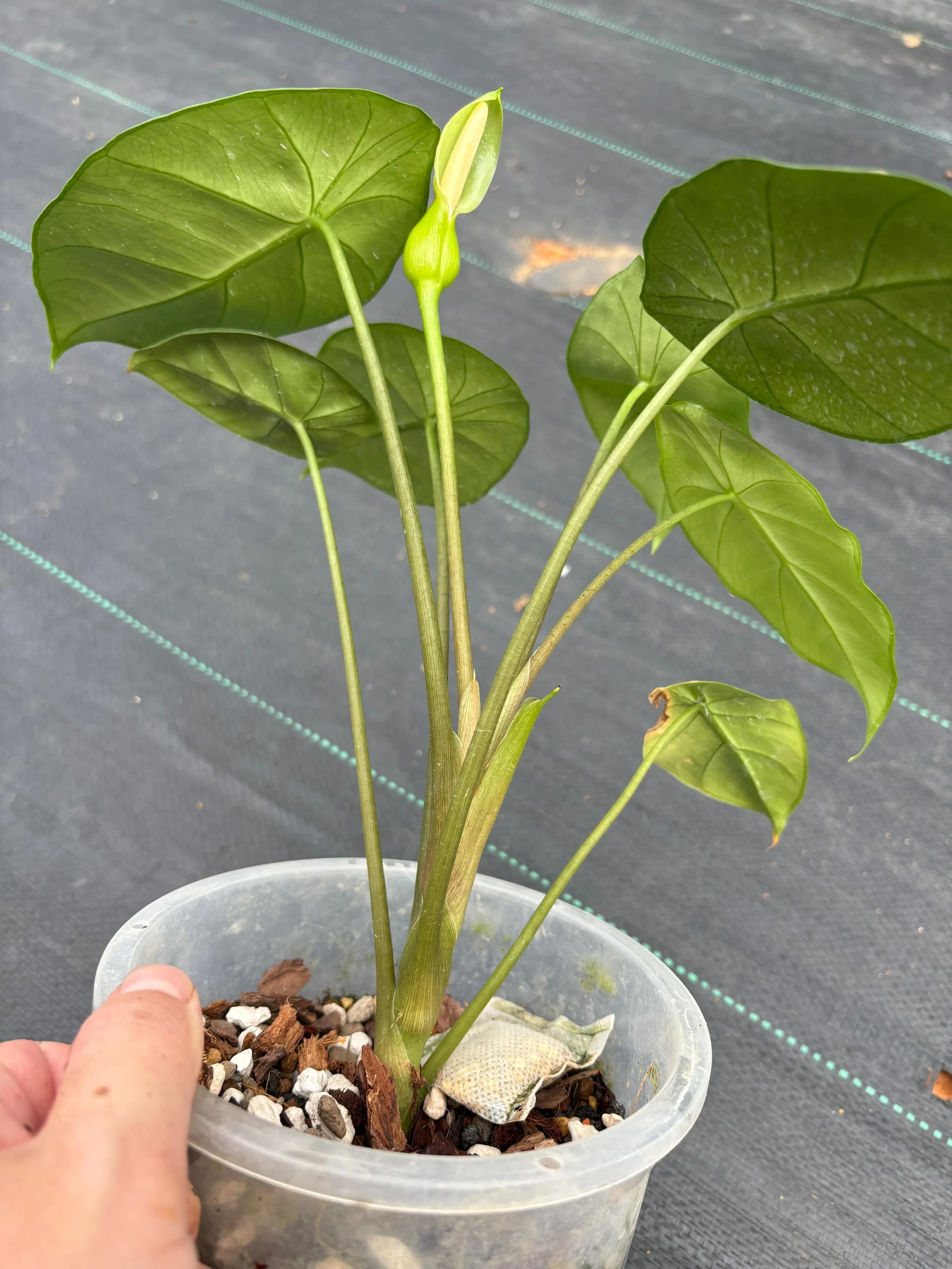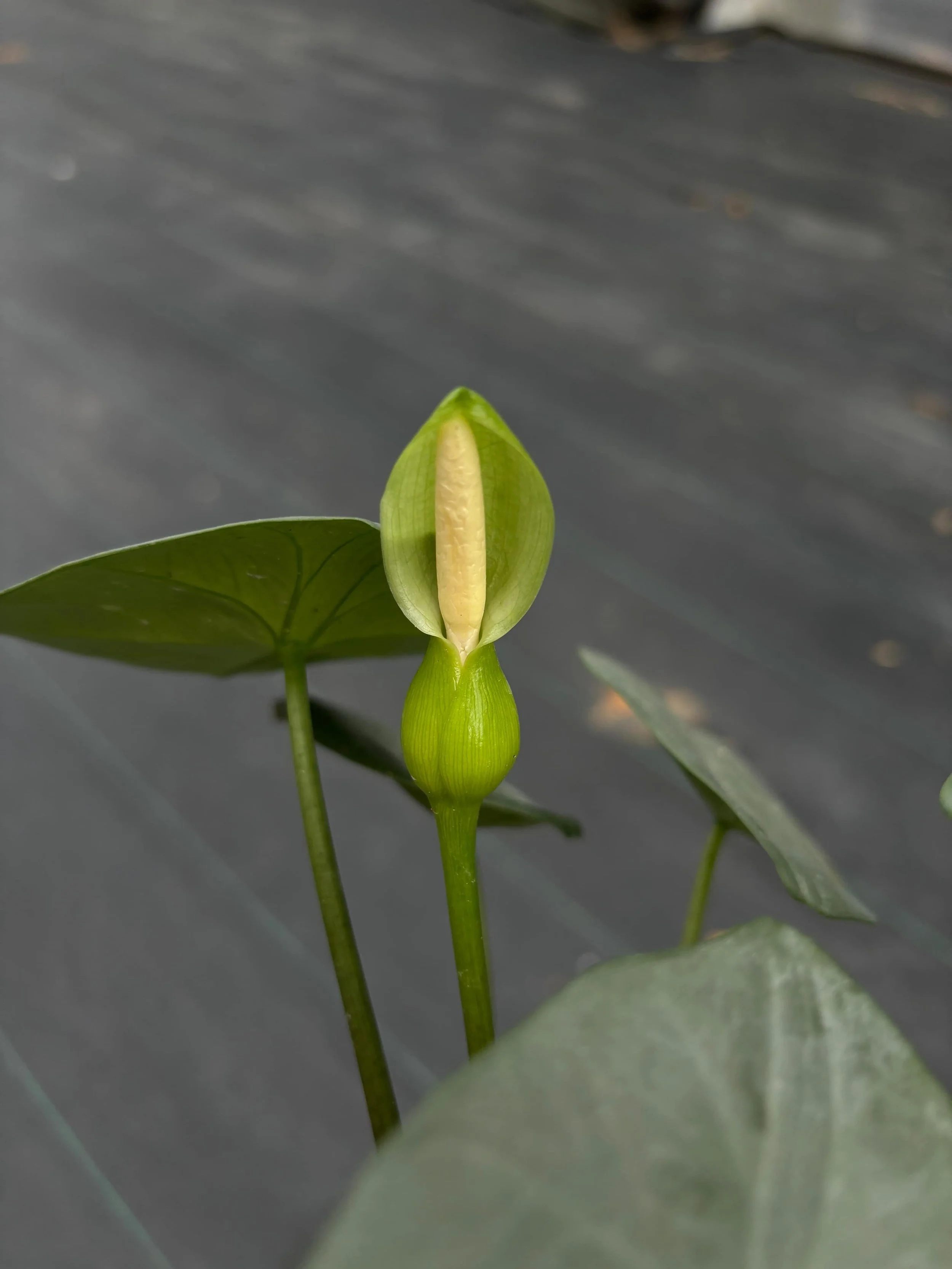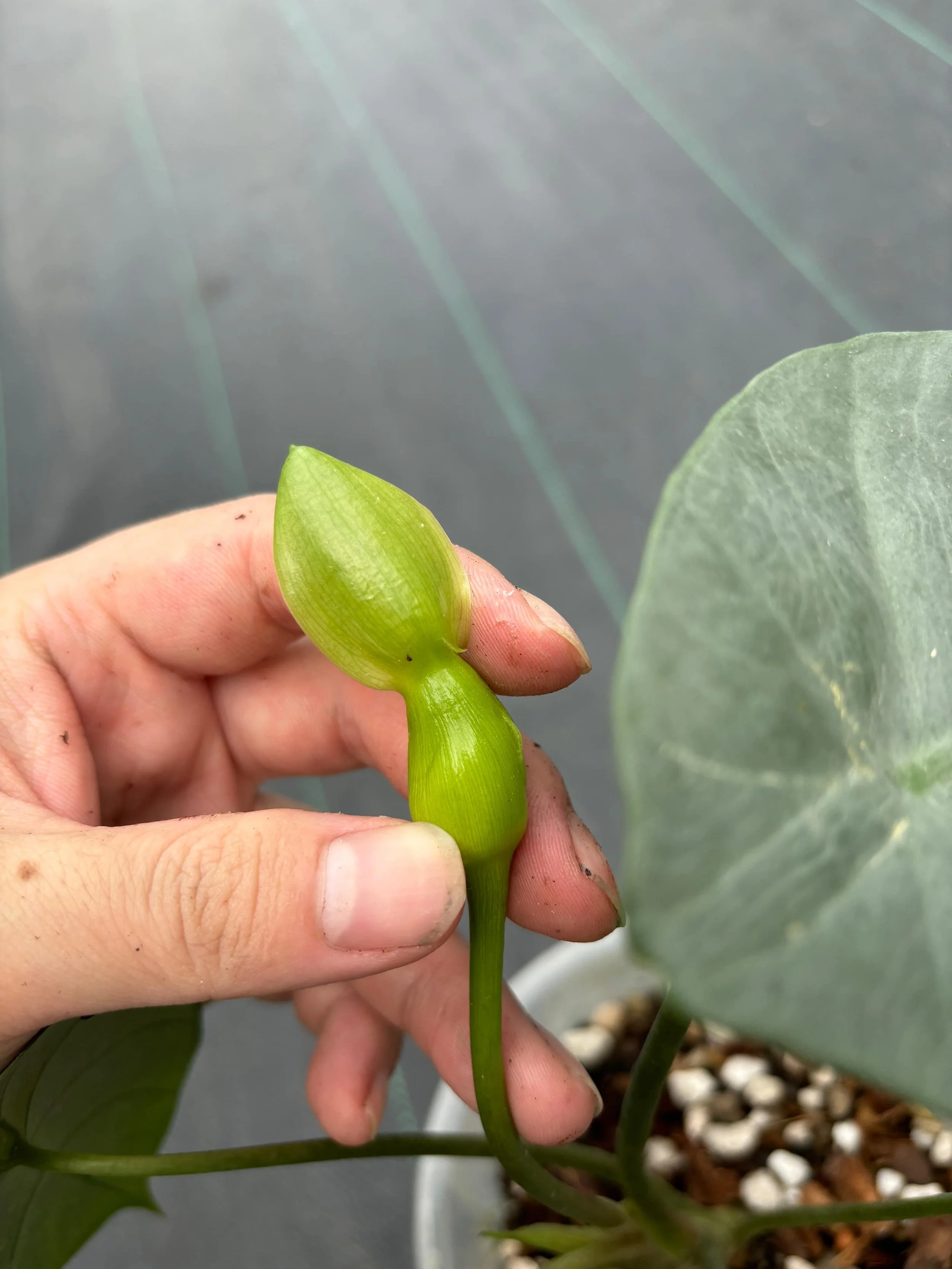ALOCASIA PERAKENSIS
SYNONYMS: N/A
DISTRIBUTION: Endemic to Peninsular Malaysia
CLIMATE: Tropical humid climate
Humidity is moderate throughout the year, ranging from 60% to 70%
Temperature is varies between the seasons - within the range of 48°F/9°C to 88°F/31°C during the day. Minimum temperatures never dip below 45°F/7°C
Rainy and humid season (October to May) and a dry season between June and October. The average annual rainfall is 1,200 mm
ECOLOGY: In montane forests, in leaf litter and on rocks, mostly at 1100-1525 m altitude. Ridley (11. cc.) noted it as low as 650 m (2000 feet), probably based on his collection from Kuala Teku.
SPECIES DESCRIPTION:
Semi-erect herb to ca. 75 cm tall (often smaller); stem creeping to decumbent, somewhat elongate - the internodes as long as or longer than wide, ca. 2.5 cm diam.; leaves several along the stem, (?)irregularly interspersed with lanceolate cataphylls to 8 cm long and drying red-brown; petiole to ca. 40 cm long, sheathing in the lower V4, grey-green to purple-brown; blades dark green to grey-green, ovate to elliptic, peltate, coriaceous to thickly coriaceous and subsucculent, 14 x 6 - 34 x 13 cm; anterior lobe widest ca. 2-4 cm distal to insertion of petiole, the tip broadly acute, acuminate for ca. 1.5 cm, the margin mostly entire, occasionally somewhat sinuous in the lower part; anterior costa with 2-3(-4) primary lateral veins on each side, diverging at ca. 45-60°, running to a submarginal vein ca. 1 mm from the margin; secondary venation not forming interprimary collective veins, mostly inconspicuous, but, like primary venation, adaxially impressed in dry state in thickly coriaceous leaves; posterior lobes completely united except for a shallow retuse notch, rarely with an acute notch to ca. 1 cm deep, together cuneate to slightly attenuate, 1/3-1/2 the length of the anterior lobe; posterior costae subparallel
INFLORESCENCE:
Inflorescence solitary to paired; peduncle about half to subequalling the length of the petioles; spathe greenish yellow to white, ca. 6 cm long; lower spathe ovoid, ca. 3 cm long; limb narrowly ovate, at first erect, then reflexed; spadix shorter than spathe, ca. 5 cm long, stipitate for 4 mm; female zone ca. 7 mm long; pistils few - ca. 15, rather large - ca. 4 mm long; ovary globose, 2.5 mm diam.; style 1.5 mm long; stigma prominently 2-3-lobed; sterile interstice ca. 2.5 mm long, a single whorl of synandrodia; male zone 1.5 cm long, entirely within and filling the upper half of the lower spathe chamber, conic - ca. 8 mm diam. at base narrowing to 5 mm at apex corresponding with spathe constriction; synandria relatively large - 4 mm diam., more or less hexagonal, 3-5-merous; thecae opening by apical pores not overtopped by synconnective; appendix narrowly cylindric, ca. 2.5 cm long, 4 mm diam., deeply grooved, white to yellowish; fruiting peduncle subequalling the petioles; fruiting spathe ovoid, ca. 4 cm long, the spathe dehiscing longitudinally; berries bright red.
VARIEGATED FORMS: N/A
ETYMOLOGY: Perak is a state in the northwest of Peninsular Malaysia, that exists along the Perak river
NOTES:
Tissue cultured Alocasia perakensis were introduced to the western market by Silver Krome circa 2021/2022, available as Alocasia perakensis ‘Thai Giant’
Although Alocasia perakensis has not been accepted as an entity distinct from A. beccarii by any author since its first description, they are readily distinguishable, though evidently closely related, allopatric species. Alocasia perakensis is on the whole much more robust, the leaves are generally more leathery - sometimes almost succulent, and the connate posterior lobes are cuneate rather than attenuate, the stem is more elongate, the bracts between the leaves are less frequent, the inflorescence, though structurally very similar to that of A. beccarii, is about twice the size, and the spathe is greenish yellow to whitish. With the exception of two high altitude collections from Mt Kinabalu (Sabah), doubtfully attributed here to A. beccarii, it has a higher altitudinal range than that species.
Although quite a number of collections have been made, this species is poorly known in flower and the description of the inflorescence is prepared from a single spirit collection (Hay et al 9280).
Though originally thought to exist only in peninsular Malaysia, Alocasia perakensis has recently been recorded in Thailandm and is another example of a link between the aroid flora of the Central Range of Peninsular Malaysia with the mountainous area near Yala; other examples of of southern Thai/Central Range disjunction are Piptospatha perakensis (Engl.) Ridl., Pothos curtisii Hook.f., P. kingii Hook.f. P. macrocephalus Scort. ex Hook.f. and Scindapsus scortechinii Hook.f.
Other specimens seen: PENINSULAR MALAYSIA: Pahang, Cameron Highlands, Batten Pool s.n. (SING); Perak, Larut, trail from Bk. Larut to G. Hijau, Boyce 681 (K, KEP); Perak, G. Hijau, Burkill & Haniff 12769 (SING); Negeri Sembilan, Ladang Gadis, Carrick 692 (SING); Selangor, along old abandoned rd to Genting Highlands, Croat 53321 (K); Perak, Genting Highlands, Croat 53338 (K); Perak, G. Hijau, Mohd. Haniff & Mohd. Nur 2350 (K, SING); Cult. RBG Sydney Acc. No. 940347 ex Pahang, Bukit Eraser, Hay et al. 9280 (NSW); Pahang, No. 5 Camp, Cameron Highlands, Henderson FMSM 11666 (BO); Perak, Larut Hill, Thaiping, Long 6 (K); Selangor, top of Eraser's Hill, along path from Red Cross to Wray's Cottage, Nicolson 1175 (US), 1178 (US); Pahang, Cameron Highlands, along S path to G. Beremban, Nicolson 1194, 1201 (both SING, US); Pahang, Eraser's Hill, Mohd. Nur 10548 (SING); Pahang, Boh Plantation, Cameron Highlands, Mohd. Nur s.n. (SING); Pahang, Eraser's Hill, below Methodist Mission, Purseglove P.4283 (GH, K, L, SING); Pahang, Kuala Teku, Ridley s.n. (K); Perak, Scortechini s.n. (K, SING); Perak, Maxwell's Hill, path to G. Hijau, Mohd. Shah & Sidek 1071 (K, SING); Kelantan, G. Stong, Symington 37727 (KEP).
CULTIVARS: Alocasia perakensis 'Silver Giant'
HYBRIDS: N/A
REFERENCES:


